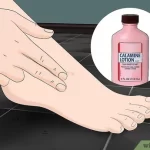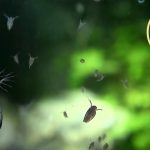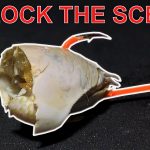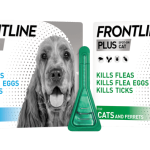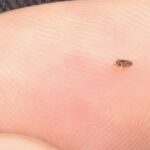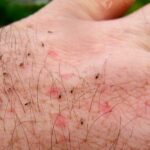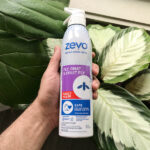Sand fleas, or no-see-ums, are small biting insects that live in coastal areas. These sand flea bite symptoms can cause severe irritation for most individuals. What attracts no see ums? No see-ums are attracted to the carbon dioxide we exhale, so they usually fly up to around 4 feet off the ground to find a source of carbon dioxide. You have no see ums, do you know how they spread? Have you been wondering how to get rid of no see ums? If so this article is for you. We’ve provided some answers to some common questions regarding no see ums. As well as ways to prevent sand fleas and some simple solutions on how to get rid of no see ums naturally.
No See Ums Vs Sand Fleas
Introduction
No see ums and sand fleas are small biting insects that live in sandy beaches. They’re often similar in appearance, but are different types of insects. Both can be annoying to deal with, especially if you’re visiting a beach for fun. However, no see ums and sand fleas won’t cause lasting effects if you do get bitten by them. This post will cover their differences and how to avoid any potential issues from each variety of insect.
No See Ums
Small, bite-sized and harmless to humans, no see ums are tiny bugs that live in sand. They can’t be seen by the naked eye and they fly around biting people. No See Ums are not dangerous to you or your family, but they are annoying because of the itchy welts their bites cause.
No See Ums only bite when they’re in direct contact with human skin, so it’s important not to let them get a hold on you! They like to hide under shirts and swimsuits and will bite anywhere there’s exposed skin (so watch out). If you’re worried about getting bitten while swimming or playing outside on hot days, be sure to wear long sleeves and pants when possible during peak times (dawn/dusk).
The best way to avoid being bitten by no see ums is by wearing light-colored clothing if possible–the contrast between the colors helps make these bugs easier for us humans to spot before they get too close
Sand Fleas
Sand fleas are an arthropod that is native to sand dunes, beaches, and shorelines. They are not dangerous to humans. The main difference between sand fleas and no see ums is that the former has a more elongated body shape and they don’t fly like the latter.
Sand fleas feed off of dead animals, fish scales and blood from other animals like birds or reptiles. They do not bite humans unless they’re sick or dying themselves (it’s self-preserving). So if you happen to see one crawling around on your skin it’s nothing to worry about!
What are No-See-Ums?
The scientific name for the no-see-ums is Culicoides sonorensis. Because they are so small and black, they are often mistakenly considered horseflies or mosquitoes. They can be seen around the waistline of pants if you look close enough, but they are so small that their wings look like tiny dots on your skin. No-see-ums are also called sand flies, sand gnats and sand flies because these small creatures live near beaches where there is plenty of sand in order to lay their eggs.
What is the best way to prevent bites from no see ums?
To avoid bites from no see ums, wear long-sleeved shirts and pants. Also, use a repellent with DEET. It’s best to avoid going outside at dawn and dusk when no see um activity is highest. You may also wish to keep your house screened by using window screens or fine mesh screens on doors so you can keep bugs out of your home without letting in too much air circulation. Do not use scented soaps or lotions when going outdoors; they will attract more insects than usual! Finally, do not let pets outside if they have been around livestock—they could be carrying the larvae on their fur that could end up biting you later!
How long do they bite last?
How long do they bite last?
Sand fleas are a bit smaller than no-see ums, so you’ll likely get more bites in one sitting. They also tend to feed on animals as well as humans, which means that if you’re camping with your pet and they go outside at night (or vice versa), it’s very possible that both you and your dog will be bitten by sand fleas. Sand flea bites can be very itchy and cause an allergic reaction in some people; others have no reaction at all.
What are sand flies and sand fleas?
Sand flies and sand fleas are both small, biting insects. There is some overlap between the two regarding the physical characteristics of their bodies and heads, but they do have their differences as well.
Sand flies are typically larger than sand fleas, with wings that are about 1/4 inch in length. They belong to a different species from sand fleas (significant enough for entomologists to classify them as separate genera) that live on the ground or in trees instead of burrowing into it like sand fleas do. Sand flies also have longer legs than sand fleas do; this gives them greater mobility when taking off quickly while flying away from an animal’s movements after biting into skin tissue.
Are they the same thing as no see ums?
There are two types of tiny sand-borne pests that bite and itch: no see ums and sand fleas. Both are annoying, but they’re not the same thing!
- No see ums are smaller than sand fleas and move quickly in large numbers to sting or bite you. They mostly live in sandy areas, like beaches or deserts with little vegetation.
- Sand fleas prefer areas with tall grasses, bushes or weeds where they can hide and stay out of sight until they attack you—which is when it’s too late! Sand fleas also like moist soil and water around ponds, lakes or rivers for breeding purposes.
They’re more common in warm climates (like Florida) than cold ones (like New York City), though there have been reports of them being spotted as far north as Canada during warmer months when temperatures rise above 70 degrees Fahrenheit (21 C).
Are sand fleas and sand flies dangerous?
Sand fleas and sand flies can both carry disease, but not very likely. They can cause severe allergic reactions in some people, including anaphylactic shock, which is life threatening. They are also known to cause bites to become infected or inflamed. Additionally, sand flies may leave behind small red welts at the bite site as well as itching and skin rashes in people who have been bitten by them before.
Bites from these insects often result in more mild symptoms such as redness or swelling around the area of contact with an insect’s mouthparts; however, some individuals may experience intense itching after being bitten by a mosquito or other type of bug that carries parasites such as filarial worms (e.g., Wuchereria bancrofti). In rare cases where someone has been infected with a parasite such as malaria via one of these types of bites they may experience fever along with other flu-like symptoms like diarrhea (or watery stools) and vomiting (or throwing up).
No see ums and sand fleas are both annoying and similar, but different.
No see ums and sand fleas are both annoying and similar, but different. No see ums are tiny, sand fleas are bigger. No see ums are more common, while sand fleas are less common and more dangerous. Sand fleas can bite humans (unlike no see ums), but no-see-ums bite more often than sand flies do.
Conclusion
In short, no-see-ums and sand fleas share a lot of similarities. They are bothersome, bite you in the night and can even transmit diseases to humans. However, there are also some differences that should be noted about each species. For one thing, sand fleas only live near the ocean whereas no-see-ums may be found anywhere from beaches to swamps. Furthermore, sand fleas bite during daylight hours whereas no-sees will bite at night time or dusk/dawn when it’s dark outside because they have poor eyesight so they prefer these conditions for biting humans instead of just during the day like other bugs might do.
Read more


